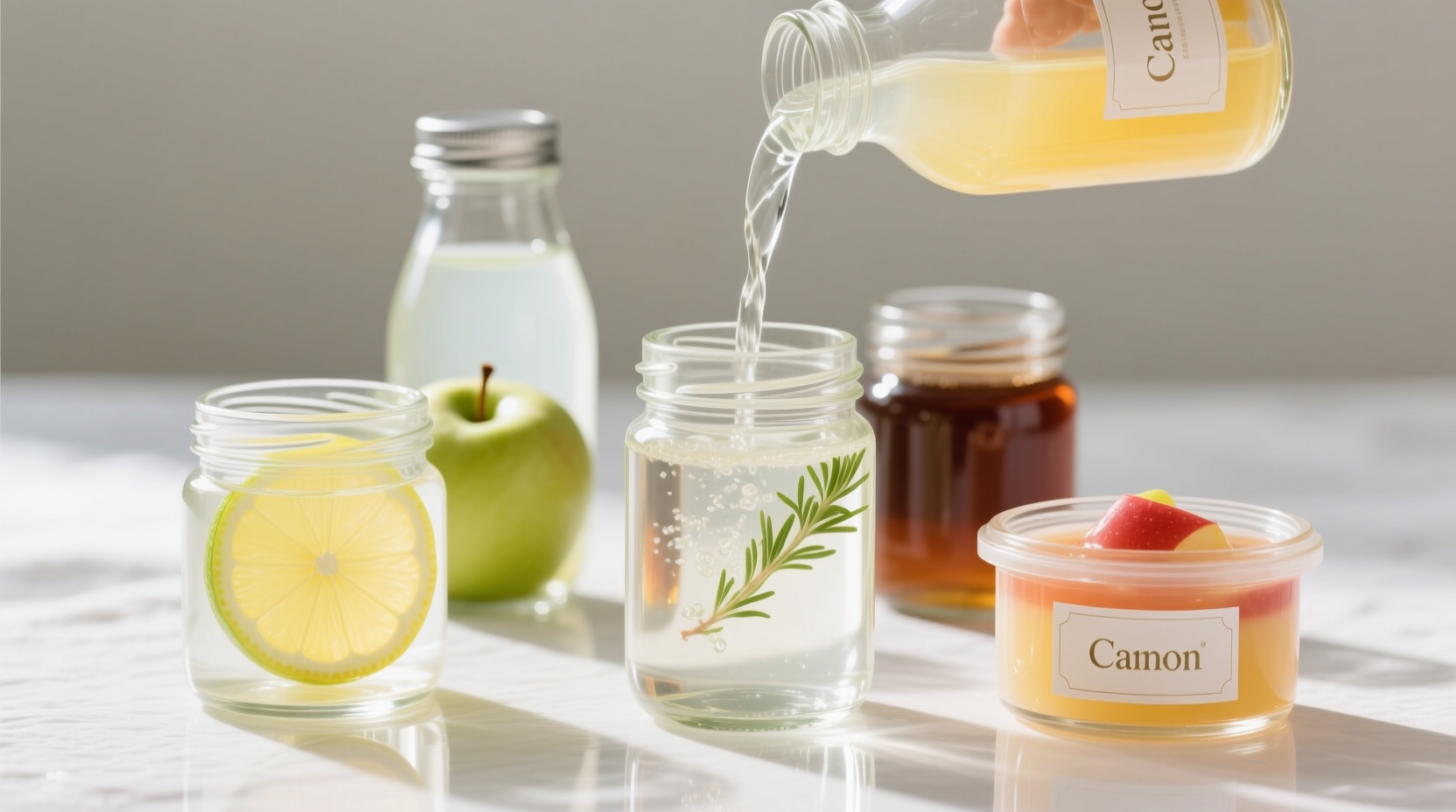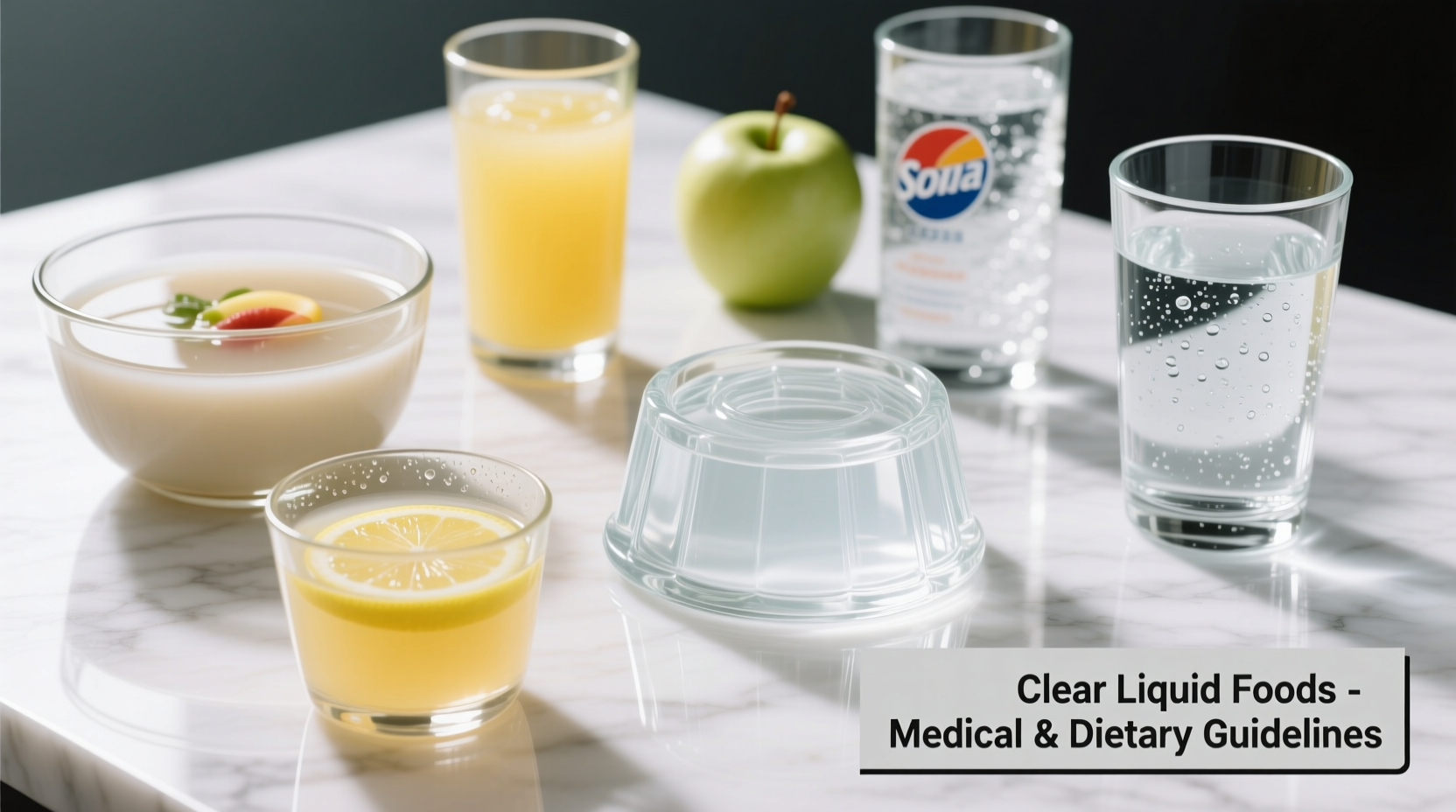If you're preparing for a medical procedure or recovering from digestive issues, understanding what qualifies as clear liquid foods is critical for your health and safety. Unlike regular liquids, clear liquids must be transparent when held up to light, with no solid particles visible. This specific dietary requirement serves important medical purposes but is often misunderstood.
Defining Clear Liquid Foods: The Essential Criteria
Clear liquid foods meet three strict criteria: they must be transparent (you can read text through them), leave no residue when strained, and contain no solid particles. This differs significantly from full liquid diets, which allow opaque beverages like milk or smoothies. The distinction matters because medical professionals rely on these specific properties for procedures like colonoscopies where any residue could compromise results.
According to the Mayo Clinic, clear liquids play a vital role in medical preparation protocols. They provide necessary hydration while ensuring the digestive tract remains empty and clear for examination or surgery. Understanding this definition prevents dangerous misunderstandings that could delay or cancel important medical procedures.
Complete List of Approved Clear Liquids
Not all transparent-looking beverages qualify as clear liquids. Here's the medically-accepted list with specific details:
| Clear Liquid Category | Approved Options | Important Restrictions |
|---|---|---|
| Water & Enhanced Waters | Plain water, flavored water (lemon/lime), electrolyte waters | No coconut water (too cloudy), no vitamin waters with pulp |
| Broths & Stocks | Clear chicken, beef, or vegetable broth | No cream-based soups, no visible vegetables or meat |
| Fruit Juices | Apple juice, white grape juice, cranberry juice cocktail | No orange juice, no pulp-containing juices, no vegetable juices |
| Gelatin & Popsicles | Plain gelatin (Jell-O), fruit-flavored popsicles | No dairy-based puddings, no fruit pieces in popsicles |
| Hot Beverages | Black coffee, plain tea, herbal tea | No milk, no cream, no honey after midnight before procedure |
Common Misconceptions That Cause Medical Delays
Many patients mistakenly believe certain beverages qualify as clear liquids, causing procedure cancellations. The Johns Hopkins Medicine reports that orange juice is the most common error—despite appearing clear in the container, its pulp particles remain invisible to the naked eye but are problematic for medical procedures.
Other frequent mistakes include:
- Mistaking apple sauce for a clear liquid (it's not a liquid at all)
- Assuming all sports drinks qualify (some contain clouding agents)
- Thinking clear soups with tiny vegetable bits are acceptable
- Using red or purple liquids before colonoscopies (can be mistaken for blood)

When Medical Professionals Require Clear Liquids
Clear liquid diets serve specific medical purposes with strict timeframes:
Before medical procedures: Typically required 24-48 hours before colonoscopies, endoscopies, or surgeries. The American Society of Anesthesiologists emphasizes that proper preparation reduces procedure time and complications. Patients who follow clear liquid protocols correctly have 30% fewer procedure delays according to ASA research.
After surgery: Used during initial recovery when the digestive system needs rest. Most patients transition to full liquids within 24-48 hours.
Digestive issues: Short-term use for conditions like nausea, vomiting, or diarrhea. Never use as a long-term diet—clear liquids lack essential nutrients and electrolytes.
Practical Guidance for Safe Implementation
Following a clear liquid diet requires careful planning:
Hydration monitoring: Drink 4-8 ounces every 30-60 minutes to maintain hydration. Watch for signs of dehydration including dark urine, dizziness, or dry mouth.
Electrolyte balance: Include electrolyte-enhanced clear liquids like certain sports drinks (check ingredients) to prevent imbalances. The National Institutes of Health notes that prolonged clear liquid diets without electrolyte replacement can cause muscle cramps and fatigue.
Transition planning: When moving from clear liquids to solid foods, follow this progression: clear liquids → full liquids → soft foods → regular diet. Rushing this process can cause digestive distress.
Color considerations: Avoid red, purple, and orange liquids before colonoscopies as they can discolor the intestinal lining. Stick to lemon-lime, green, or clear beverages during this period.
Clear Liquid Diet Time Limitations
Medical professionals strongly advise against extended clear liquid diets. The digestive system requires essential nutrients that clear liquids cannot provide. Most healthcare providers limit clear liquid diets to:
- 24-72 hours before medical procedures
- 24-48 hours after certain surgeries
- Maximum of 3-5 days for acute digestive issues
Exceeding these timeframes risks nutrient deficiencies, muscle loss, and electrolyte imbalances. Always consult your healthcare provider before starting or extending a clear liquid diet.











 浙公网安备
33010002000092号
浙公网安备
33010002000092号 浙B2-20120091-4
浙B2-20120091-4